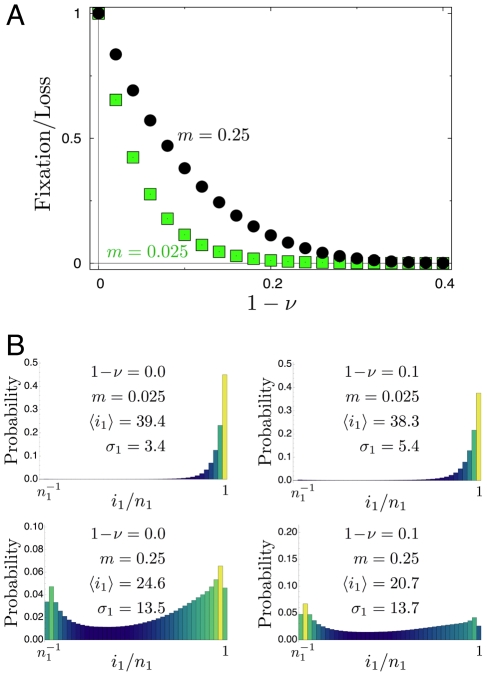Figure 3. Fixation becomes unlikely with decreasing fitness of mutant homozygotes, variance in allele frequency increases with migration rate.
a) The ratio of fixation to loss of the mutant allele in a system of two populations of sizes  is shown as a function of the difference of homozygote fitness values
is shown as a function of the difference of homozygote fitness values  , with initial condition
, with initial condition  ,
,  . Results are obtained from
. Results are obtained from  independent realizations with a heterozygote fitness of
independent realizations with a heterozygote fitness of  . As
. As  approaches
approaches  , the probability of fixation in both patches goes to zero. b) For four different scenarios of homozygote fitness
, the probability of fixation in both patches goes to zero. b) For four different scenarios of homozygote fitness  and migration rate
and migration rate  we show the quasi-stationary distribution of the number of mutant alleles in population 1 (
we show the quasi-stationary distribution of the number of mutant alleles in population 1 ( ,
,  independent realizations with initial conditions
independent realizations with initial conditions  ). The average number of mutants in population
). The average number of mutants in population  is denoted by
is denoted by  , the standard deviation by
, the standard deviation by  . As homozygotes become less fit, the distribution does not change significantly. However,
. As homozygotes become less fit, the distribution does not change significantly. However,  increases with migration rate.
increases with migration rate.

